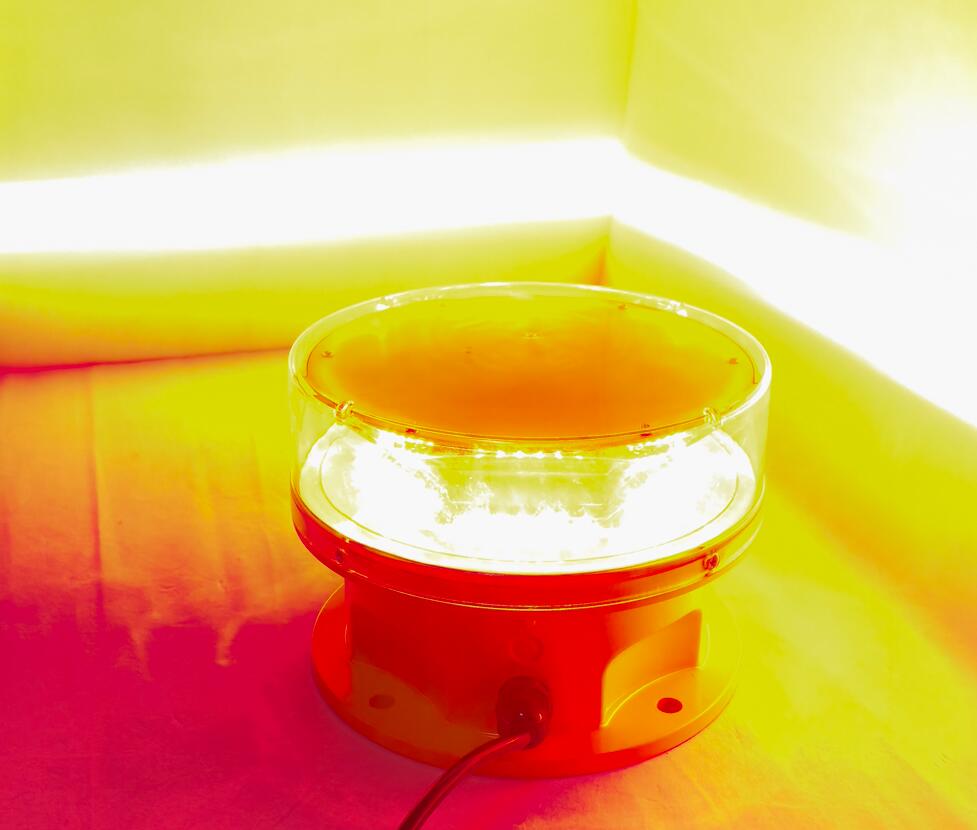The Critical Role of Red Obstruction Light in Aviation Safety
Red obstruction lights are essential components in aviation safety, helping pilots identify tall structures during nighttime and low-visibility conditions. These lights are commonly installed on buildings, telecommunication towers, wind turbines, and other high-rise structures to prevent collisions. This article explores the importance, types, regulations, and technological advancements related to red obstruction light systems.
1. Importance of Red Obstruction Light in Aviation
The primary purpose of a red obstruction light is to enhance visibility for pilots, ensuring safe navigation around obstacles. Unlike white strobes, red lights provide a constant or flashing signal that is easily distinguishable against urban lighting. Key benefits include:
Enhanced Safety – Red lights are highly visible in darkness and adverse weather, reducing collision risks.
Energy Efficiency – Modern LED-based red obstruction lights consume less power while maintaining high brightness.

Regulatory Compliance – Aviation authorities mandate red obstruction lights on structures exceeding certain heights.
2. Types of Red Obstruction Light Systems
Different applications require varying intensities and flash patterns. The main types include:
| Red Obstruction Light |
Low-Intensity Red Obstruction Lights (LIRL) – Used for structures below 150 feet, providing steady illumination.
Medium-Intensity Red Obstruction Lights (MIRL) – Employed on taller structures (150-500 feet) with flashing or steady modes.
Dual Lighting Systems – Some installations combine red obstruction lights with white strobes for optimal day-night visibility.
3. Regulatory Standards for Red Obstruction Light
Aviation authorities enforce strict guidelines to ensure uniformity in obstruction lighting. Key standards include:
FAA (Federal Aviation Administration) – Specifies light intensity, color, and flash rates for U.S. airspace.
| Red Obstruction Lights |
ICAO (International Civil Aviation Organization) – Provides global recommendations for obstruction lighting.
EASA (European Union Aviation Safety Agency) – Regulates lighting requirements across European airspace.
Compliance with these standards is mandatory, and non-compliance can result in penalties or increased accident risks.
4. Technological Advancements in Red Obstruction Light
Recent innovations have improved the efficiency and reliability of red obstruction light systems:
LED Technology – Modern LEDs offer longer lifespans, lower energy consumption, and brighter output compared to traditional incandescent bulbs.
Smart Monitoring Systems – Some red obstruction lights now feature remote diagnostics, alerting maintenance teams to failures.
Solar-Powered Options – Off-grid installations benefit from solar-powered red obstruction lights, reducing wiring costs.
5. Installation and Maintenance Considerations
Proper installation and upkeep are crucial for optimal performance:
Placement and Spacing – Lights must be positioned to ensure 360-degree visibility.
Weather Resistance – High IP-rated enclosures protect against rain, snow, and extreme temperatures.
Routine Inspections – Regular checks ensure compliance and functionality, preventing potential hazards.
The red obstruction light remains a vital safety feature in aviation, safeguarding both aircraft and ground structures. With advancements in LED technology and smart monitoring, these systems are becoming more efficient and reliable. Compliance with international standards ensures consistent performance, while proper maintenance guarantees long-term effectiveness.
